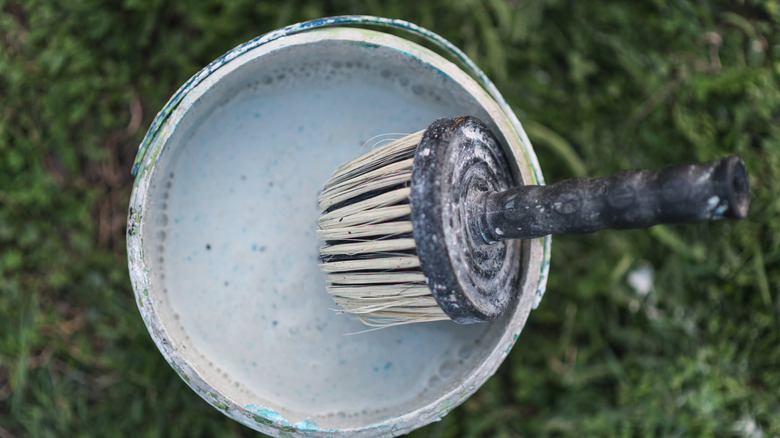Is Hardened Limewash Waterproof?
If you're looking for a product to improve the integrity of wood, stucco, brick, or other porous surfaces while adding a white or tinted color, limewash might be for you. Made from hydrated lime, salt, water, and various pigments and then aged, limewash is usually applied to walls to strengthen the material. More than that, its aged appearance and neutral color give exterior walls a certain aesthetic charm.
Limewash isn't exclusive to home exteriors, though. There are limewash interior paints, also known simply as lime paints, that are available in a wide range of color options. Regardless of whether you're using limewash inside or outside the home, one of the more significant concerns is its durability. Specifically, if the limewash is weatherproof. Roper Rhodes explains that while it is somewhat waterproof on its own, it is recommended to take extra precautions by using additional sealants and products to ensure your limewash walls are completely water-resistant.
Sealing limewash
Although limewash isn't going to completely fade away at the first sign of rain, it won't remain pristine and perfect for long. Once it's hardened, which should take roughly three to four hours, one of the more desirable aspects of limewash is that it allows the material underneath to breathe –or absorb and expel moisture. However, this means it can't be completely waterproof on its own.
Outside, the look of slightly weathered limewash may be acceptable, especially if you prefer a more rustic and vintage style for your home exteriors. However, if you don't want it to wash off, or if you're using it inside, you'll definitely need to apply a sealant. One way to make limewash and lime paint more waterproof is with a very small amount of linseed oil — no more than 1%. Alternatively, purpose-made lime sealants can be applied as a top coat for extra waterproofing.

